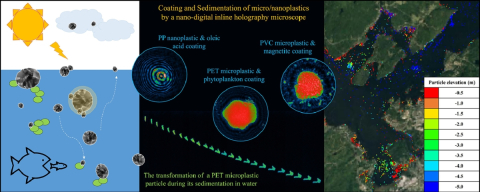
A novel in-situ and real-time four dimensional capability for the nano and microplastic life cycle research

The Ariya lab developed a novel nano-digital inline holographic microscope (nano-DIHM) was used to advance in-situ and real-time nano/microplastic physicochemical research, such as particle coatings and dynamic processes in water.
In collaboration with the National Research Council, a PhD student (Zi Wang) and a recent B.Sc graduate (Mailine Cheung), using a McGill invented technology, Nano-DIHM, provided the in-situ and real-time evidence of distinct coating patterns on nano/microplastic particles by oleic acid, magnetite, and phytoplankton, representing organic, inorganic, and biological coatings widely present in the natural surroundings.
A high-resolution scanning transmission electron microscopy confirmed nano-DIHM data, demonstrating its nano/microplastic research capabilities.
They also performed numerical modelling of transport of microplastics and pellets in the Saint John River estuary.
Water dynamics was the driving force of plastic transport, yet the accumulation of plastics was selectively dependent on particle physicochemical properties such as size and density by ∼ 7%.
The usage of nano-DIHM can provide targeted identification of nano/microplastic hotspots and aquatic plastic wastes remediation.